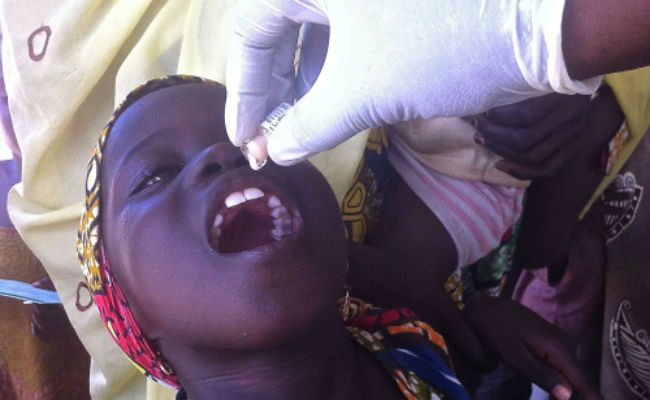Yesterday, the first Gavi-supported oral cholera vaccine campaign was launched in Cameroon, conducted on the ground by Médecins sans Frontières (MSF). The campaign draws on the global oral cholera vaccine stockpile, and aims to prevent cholera outbreaks in northern Cameroon. I asked Lorenzo Pezzoli, an epidemiologist working at the secretariat of the Global Task Force for Cholera Control at the World Health Organisation (WHO), a few questions about how the stockpile works and why this campaign matters.

Why do we need a stockpile?
“The stockpile was first created for use in emergency situations; an outbreak or a humanitarian crisis, such as the current situation in South Sudan. The creation of the stockpile was prompted by the sudden outbreak of cholera in Haiti following the earthquake in 2010. This was a game changer for us working in cholera, the American region had not reported cholera in 20 years and the scale of the outbreak there promoted the Global Task Force into action. The need for rapid response was obvious and thanks to the stockpile, this is now an option, and one which has been available following the Nepal earthquake this year, a cholera endemic country. More recently, an additional use of the stockpile that the Global Task Force is encouraging is in non-emergency situations, in cholera ‘hotspots’ where epidemics occur on a regular basis and the vaccine can be used complementarily to the “traditional” cholera measures such as promoting health education and improving access to safe water, sanitation, and hygiene (WaSH).
Following prequalification [quality assurance] by the WHO, a stockpile of 2 million oral cholera vaccine doses was created in mid-2013. However demand rapidly exceeded this figure. In November 2013, the Gavi board approved additional funding of US$ 114.5 million to respond to cholera outbreaks, stimulate global supply and assess the value and feasibility of preventive vaccination campaigns in endemic settings for the period 2014-2018.
How does it work?
In an emergency situation it takes about 10 days for countries to receive oral cholera vaccine doses after application. The request has to be approved by the International Coordinating Group, a decision which has to be made in 48 working hours; if approved it is sent to UNICEF supply division to organise the manufacturers into packing and shipment. Once in the recipient country, the delivery time to the populations-in-need varies because they are often remote, and sometimes hard-to-reach, locations. The allocation of doses in non-emergency situations will be managed by the Global Task Force and will be made available if there is a surplus on 700,000-1 million doses that are destined for emergency use.
What’s the importance of today’s launch in Cameroon?
Currently in Cameroon, the oral cholera vaccine campaign is to respond to the humanitarian crisis in the extreme north. Instability caused by extremist groups has caused the displacement of several people and cholera cases have been reported in three health districts.
We are fully aware that cholera is not, strictly speaking, a vaccine-preventable disease but in hotspots like certain areas of Cameroon where there is no access to safe drinking water or sanitation and health services are inadequate, the use of vaccination is significant to control cholera.
Ideally, oral cholera vaccine will become more widely available in these areas in non-emergencies, to act as a preventative rather than a reactive measure. It is hoped that countries that receive oral cholera vaccine for the first time in an emergency situation will be more inclined to apply for non-emergency use as a preventative measure.”
This piece was contributed by Gavi, The Vaccine Alliance.